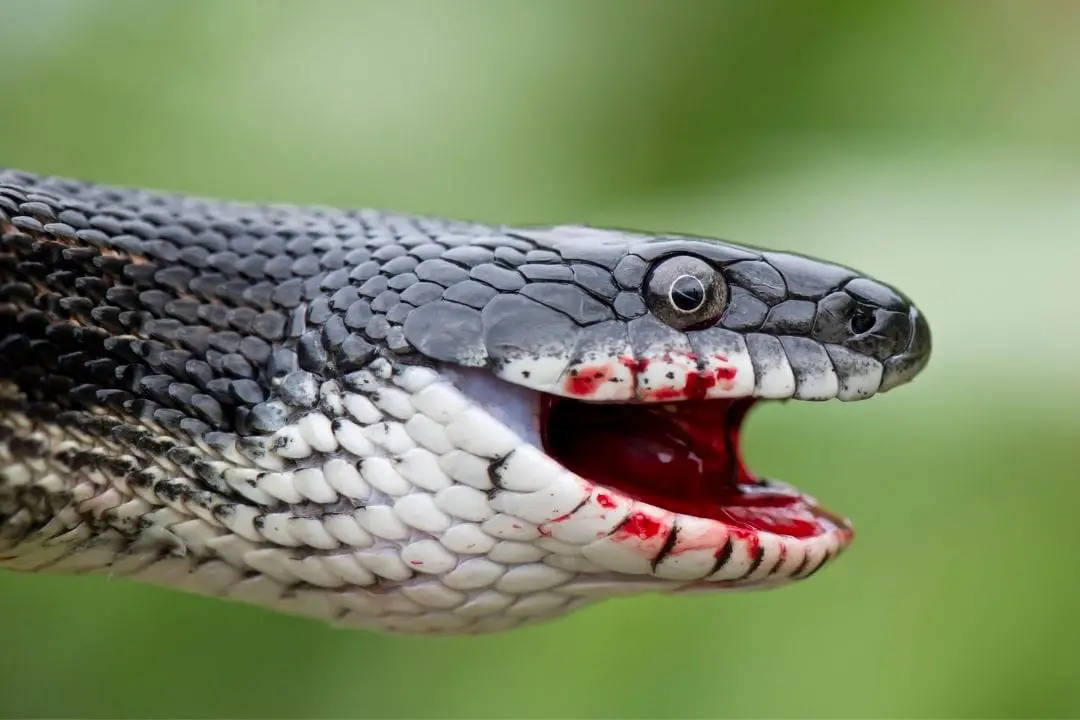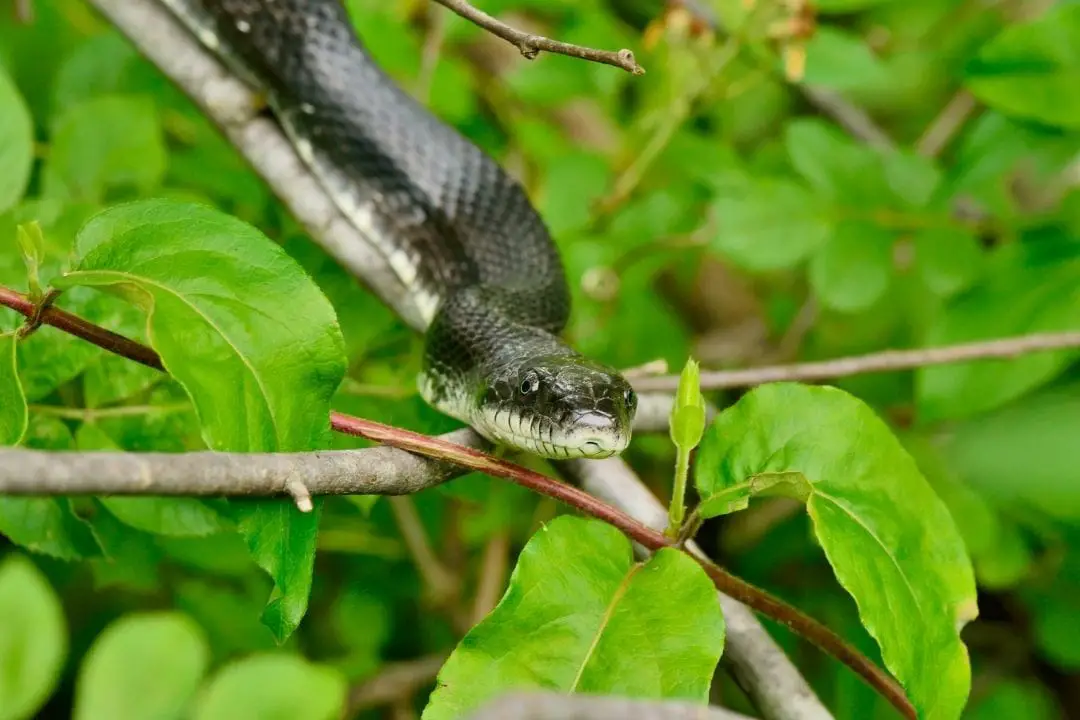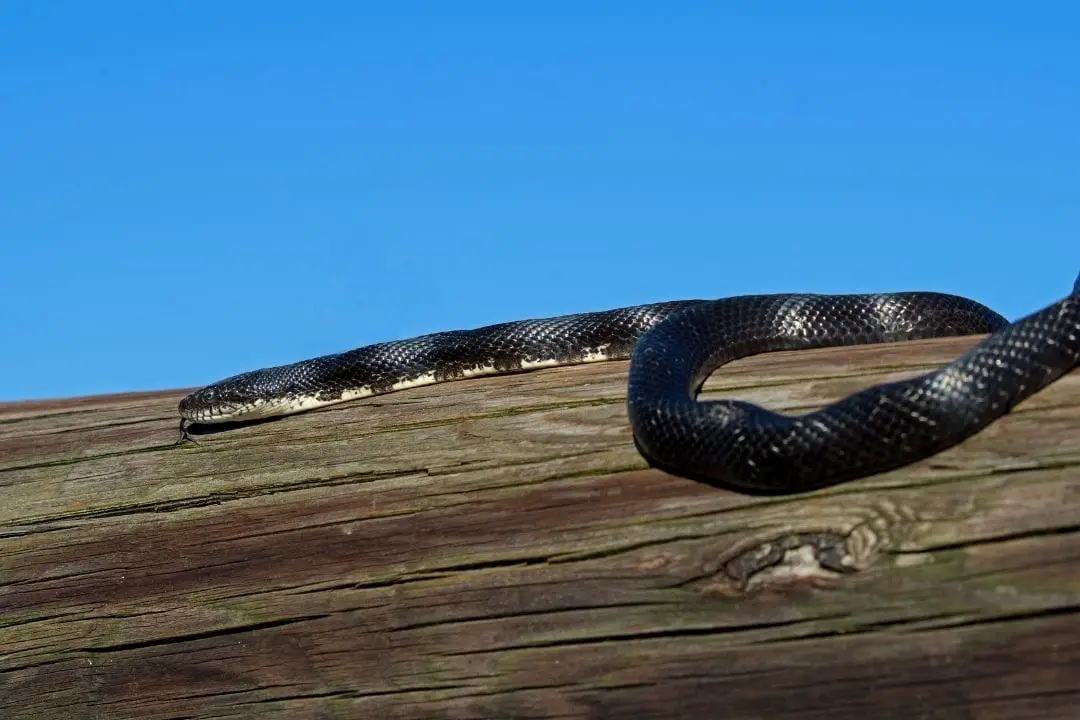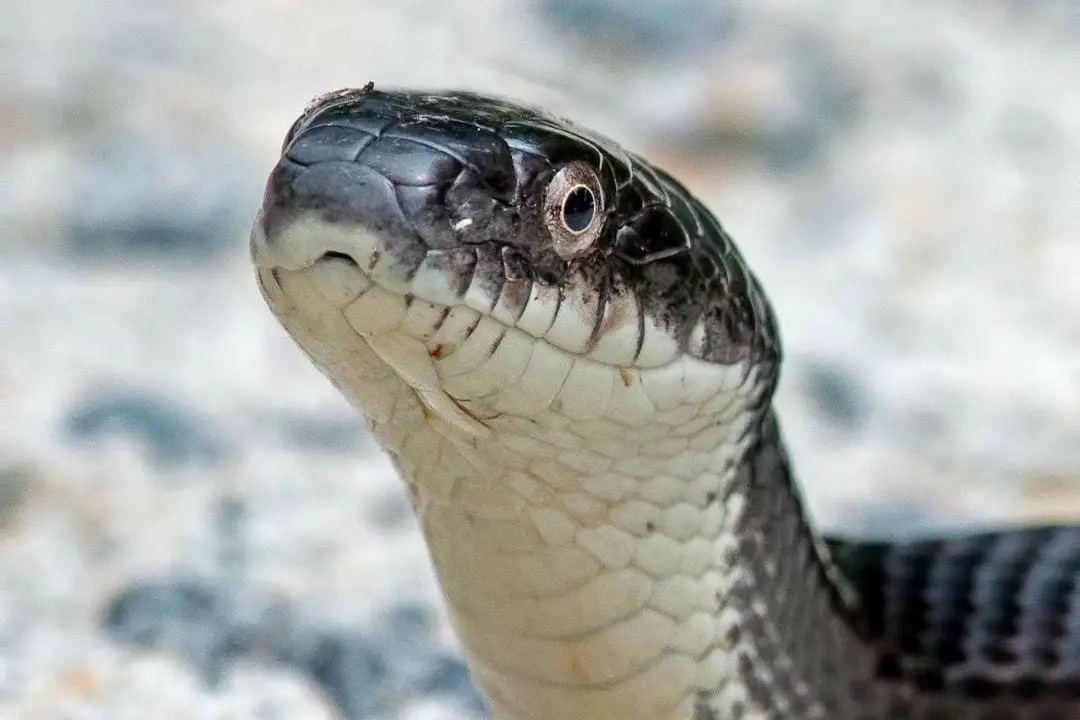Eastern rat snakes, also known as black rat snakes, are one of the most common snakes in the eastern and central United States.
These animals can reach lengths of up to 8 feet, so you may be startled if you come across one in the wild and wonder if these animals are dangerous to humans.
Are eastern rat snakes dangerous?
Eastern rat snakes are non-venomous and are not dangerous to humans.
About the Eastern Rat Snake
Eastern rat snakes (Pantherophis alleghaniensis) are found in the eastern and central United States. They typically reach lengths between 3.5 and 7 feet long. Males are typically longer than females.
These animals are mainly predators of rodents, but they will eat any small animal they can find. This means their diet in the wild includes lizards, amphibians, bird eggs, and young mammals like rabbits.
During spring and fall, these animals can be found during the day looking for food. During the summer months, they can become more nocturnal. Eastern rat snakes are excellent climbers and swimmers.
It isn’t unusual to see these animals climbing trees to find bird eggs. They can be found in many habitats from rocky hillsides to farmland. These animals are typically drawn to areas where rodents breed.
This means they may be found near human habitations and farms. They are not aggressive towards humans and will typically flee if possible. They will only attempt to bite if they feel threatened.
Defensive Behaviors
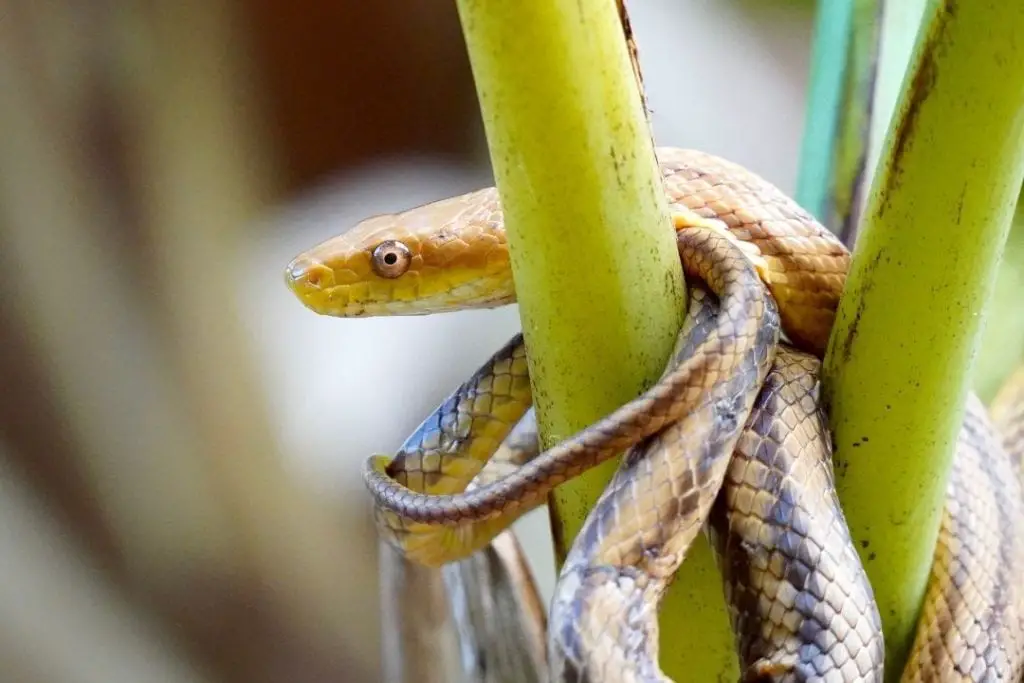
These animals are constrictors. They kill by wrapping their strong bodies around prey and cutting off blood to the brain. This results in rapid death and allows the snake to swallow the animal without risking injury.
Snakes eat prey whole, so they must take steps to make sure a meal doesn’t fight back and kill them instead. Some snakes like cobras use venom to subdue prey. Constrictors rely on overpowering prey. Most constrictors can’t cause much damage to a human. Humans are too large to be prey for most snakes.
Most snake bites on humans are from defensive bites. Eastern rat snakes typically only bite as a last resort. They attempt to flee encounters with humans first. The next set of defensive behaviors involve the snake flicking its tail to mimic a rattlesnake. They will also typically produce musk as a defensive behavior.
This means that the animal will produce a foul-smelling fluid from glands located near the cloaca. Another common defensive behavior involves changing the shape of the head to look more triangular.
Biting is a last resort that most animals will use only if all other methods of defense fail. Since these animals aren’t the largest and produce no venom, bites aren’t a serious concern.
Most rat snakes produce bites that are not much worse than a cat scratch. Basic wound care is all that is required to take care of a rat snake bite. These animals hunt very small creatures, so even a child isn’t at too much risk from these snakes.
What They Eat
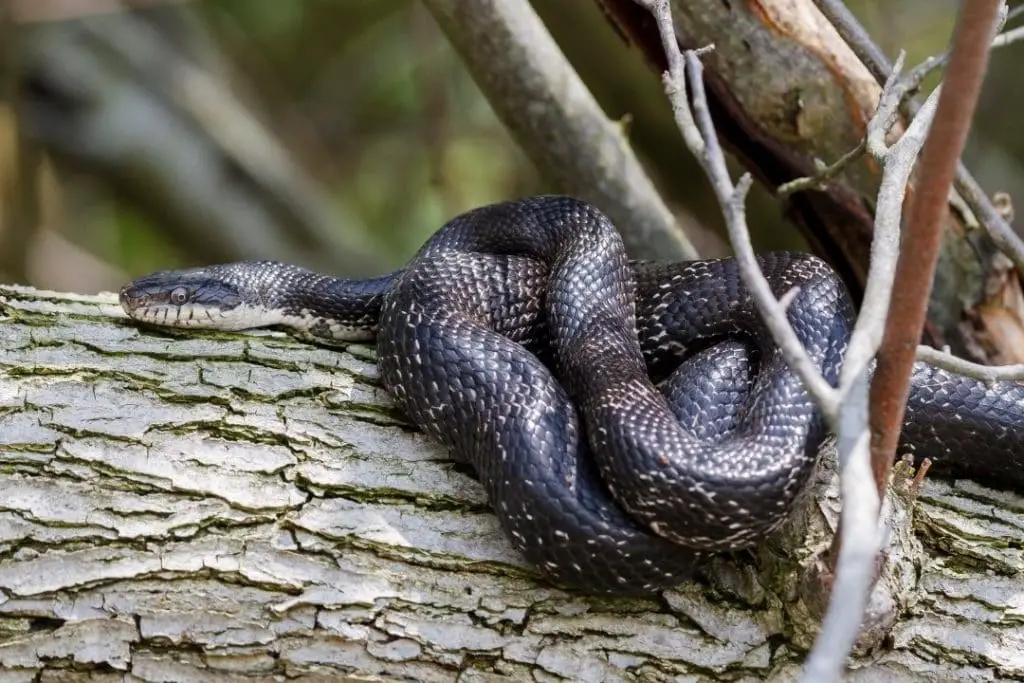
Eastern rat snakes are typically considered beneficial to humans. This is because they keep down the rodent population. Since they eat so many rodents, they also play a major role in reducing the tick population.
They are commonly found in barns and grain silos. Since mice and other rodents are common in these areas, rat snakes will typically come in looking for food.
One interesting fact is that these snakes will sometimes keep hunting after killing a prey item. This is because the snake is covered in the scent of its previous prey so it will be less noticed.
The snake will return to the original kill and consume it later. This means that one snake may consume multiple prey items in one hunting session.
The biggest headache that these animals pose for humans is their habit of eating bird eggs and chicks. They will eat chicken eggs and chicks if given the chance. Any chicken coup in the native range of the ratsnake needs to be made snake-proof.
In Captivity
Eastern rat snakes are one of the more common species in captivity.
While they are larger than some of the other species kept in captivity, they have a docile personality that endears them to many reptile keepers. They can be defensive as young animals but will tame down with regular handling.
When kept as pets, these snakes are known for being active and curious. Providing plenty of space and branches or dowels to climb is a good idea for these snakes. Most defensive behaviors that you will see in these snakes consist of musking and tail rattling behavior.
Everything you need to know about caring for Black Rat Snakes in captivity:
Read our Black Rat Snake Care Sheet (Complete Guide)
A stressed snake will bite if provoked. This can be noticed by the distinctive “S” posture these snakes will assume. The most common type of bite in captivity is a mistaken feeding response.
This happens with snakes that aren’t handled often or if the scent of prey is on the owner’s hands.
These snakes have a very good sense of smell so rodent, bird, or lizard scents can provoke a bite. Make sure your hands have been washed before you try to handle a snake.
Bites are typically not very damaging and only need basic first aid like cleaning the wound. Always approach snakes from the side and be sure to support their weight so they aren’t frightened.
By handling at least once a week, a snake will become easier to handle. This is because the snake learns that nothing bad will happen when you handle them.
Summary
Eastern rat snakes are not dangerous to humans. They mainly feed on mice, so having them around is good. If you see these snakes near your home, leave them be. If you have any questions or comments, be sure to leave them below.
